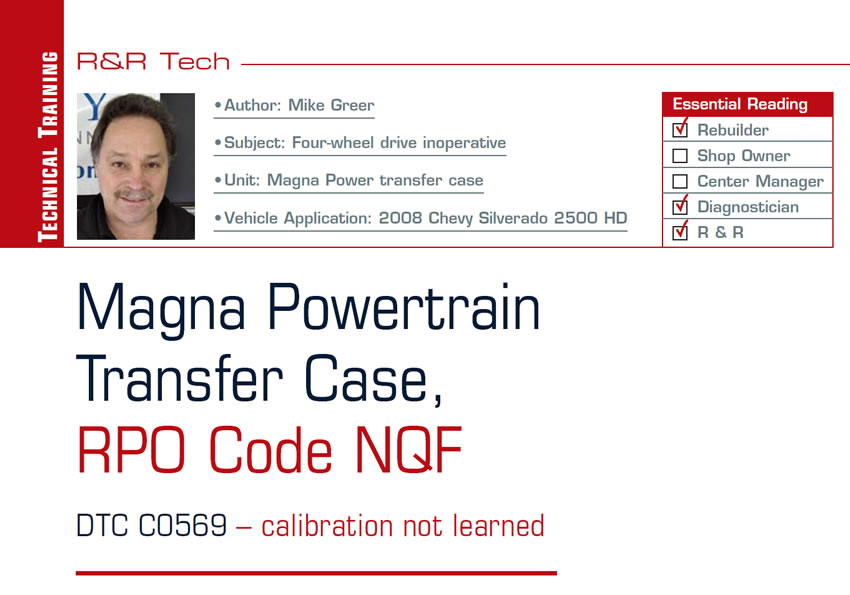Basic Visual Checks Key to Successful Diagnosis
We have all read our share of tech articles that end up with the fault being traced to a failed component. We’ve also seen plenty of information about vehicle subsystems creating “false positives” for a component that was incorrectly identified as being bad. Well, this article blends these two scenarios with another added issue: a previous repair by a careless technician.
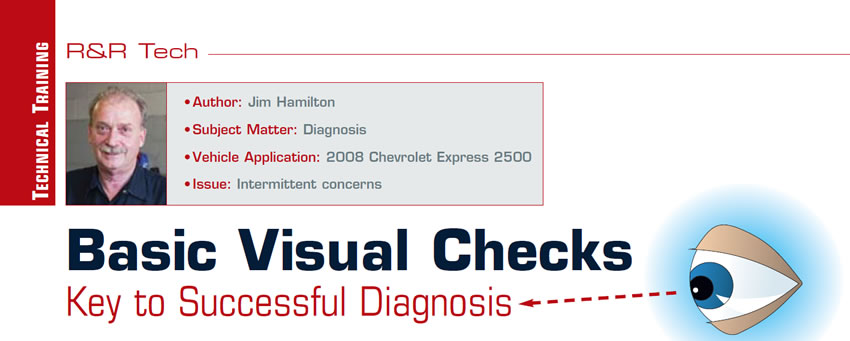
Staying Grounded
As a member of our team of technical advisers, I have come across many different scenarios that have been traced to the improper grounding of a component, or case. There are many different symptoms, but all have a common cause and repair: They are all elated to a grounding problem in an electrical circuit of the vehicle. We always think about the importance of source voltage, but the ground side of the circuit is equally important. As automotive design has evolved over time, the electrical integrity of all control circuits is critical for proper function.
The following cases are some real-world examples of customer complaints, symptoms and repairs that were traced to faulty ground circuits.
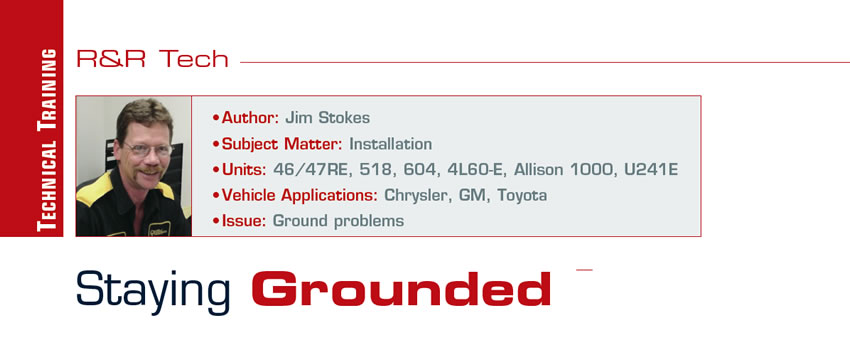
Blame it on the Torque Converter
A 2006 Chrysler 300 AWD came into our shop with a shudder concern. The vehicle was equipped with a 5.7-liter hemi engine coupled with a Mercedes 722.6 transmission, and it had 84,751 miles on the clock. The customer brought it to us for a second opinion. Prior to the visit to our shop, the customer had taken the vehicle to a Chrysler dealer for evaluation. The dealer had diagnosed the problem and determined that a torque-converter replacement was in order.
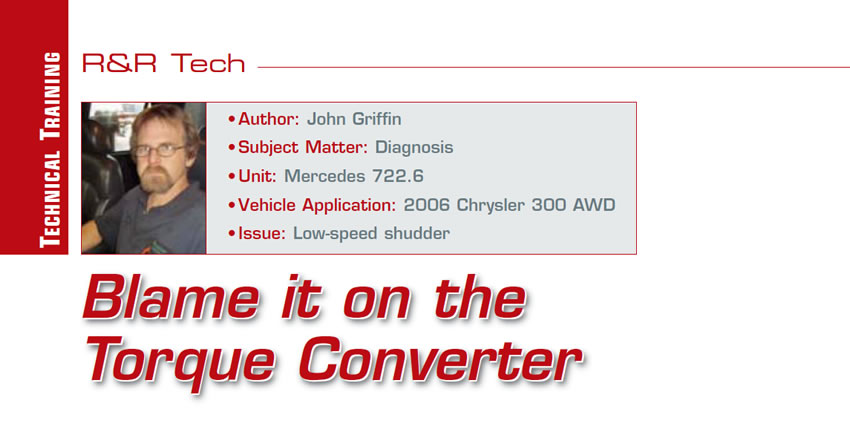
Analyzing Clues Solves TCC Mystery
The vehicle was a 1995 Ford Ranger 2WD, equipped with a 4R44E transmission. It had originally been repaired by a local transmission shop that had removed the unit and rebuilt it in house, though we had no knowledge of what the original complaint was at the time. After their repair, it would set a P0741 (TCC stuck off), OD light flashing etc. They’d had the vehicle for quite some time but then decided to purchase a remanufactured unit from one of our distributors when repairing the rebuilt unit was unsuccessful. After installation of the remanufactured unit, the same code and symptoms returned. It was then that the vehicle was brought to our shop for diagnosis.

Tag, You’re It!
This story is about the grown-up “shop” version of the game. The vehicle in question is a 2005 Ford F-150 4WD with only 49,568 miles. It all started like so many others: It came in with erratic shifts, abnormal noise and metal in the pan. The vehicle also had two transmission codes: P0712 and P0713. Initial diagnosis determined that the unit had internal hard-part damage. A remanufactured replacement transmission was in order.

Don’t Forget to Inspect the Pins
When it comes to diagnosing vehicle issues in today’s world, so many things must be taken into consideration. You must check the integrity of all possible components that affect the subsystem you’re diagnosing. In the realm of modern automotive transmissions, those subsystems will include computer hardware, software, wiring, sometimes cabling and actuators, and the components on and in the transmission itself. I guess those old rusty bolts weren’t such a challenge after all.
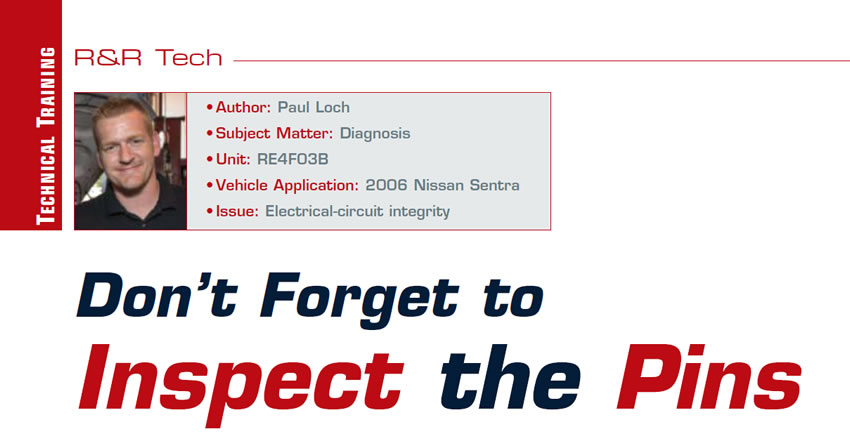
2008 Honda Civic Clutch Problem
On the initial road test and under normal driving conditions, the car seemed to be working fine. However, when the car was driven a little more aggressively, the customer’s concern became apparent. If you released the clutch pedal quickly, the pressure plate seemed to react slowly. Upon further inspection, we noted that when the vehicle was stationary with the engine off and the clutch pedal was partially depressed, it would take some time for the pedal to rise back up to the pedal stop.
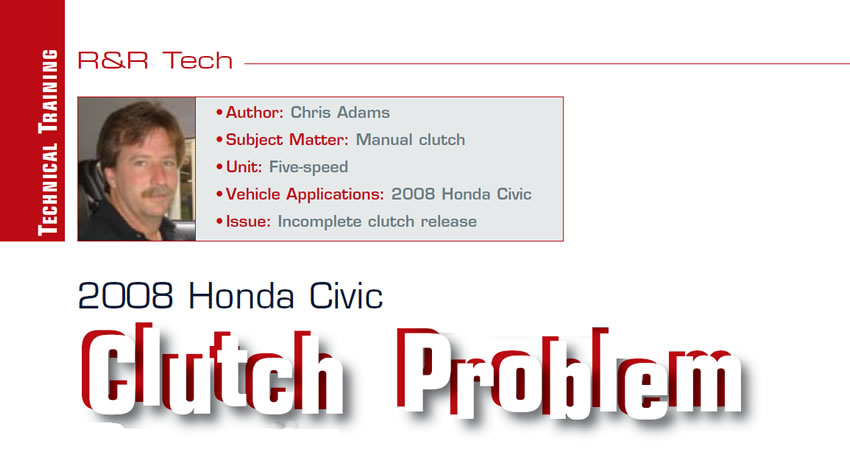
Aftermarket Accessories Can Be a Sobering Experience
Recently a 2005 Chevrolet Avalanche came into one of our shops with the customer concern of the transmission sticking in one gear intermittently, and the Service Engine warning light illuminating. When I went to start our pre-diagnostic evaluation I grabbed the scan tool and went out to the vehicle, only to notice that it had a “Smart Start” ignition interlock device installed (Figure 1).
At this point I decided to hook up the scan tool and check for codes before driving the vehicle, and I pulled codes P0740, P0753, P0758, P0785 and P2761. On the basis of these codes, we advised the customer that he had an electrical issue and we would need some additional diagnostic time. The customer agreed and left the vehicle with us to diagnose.
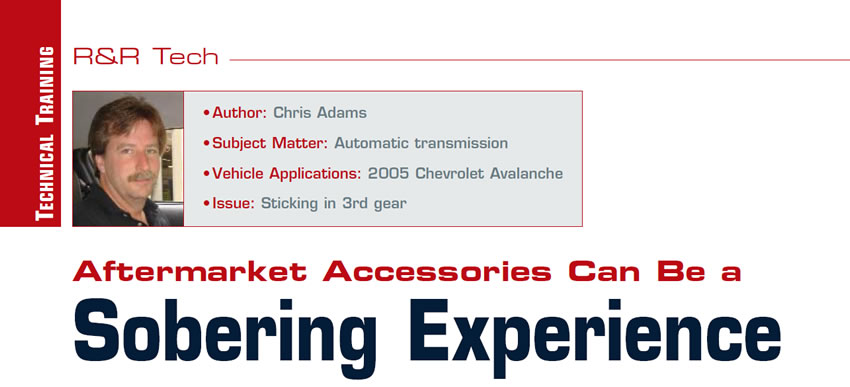
Hard Shift Remains after Reset of Shift Adapts
We recently received a 2002 Volkswagen Jetta, with a 09A five-speed automatic, with a complaint that it would not move. I determined that the fluid was burnt and black, indicating an internal failure. The check engine light was on and it had codes 00652 – gear monitoring not a plausible signal intermittent; 01045 – Tiptronic switch (F189) not a plausible signal intermittent; and 18032 – MIL request signal active (check TCM for errors) P1624. I drove the vehicle, and the transmission would slip and whine for about a block and then the vehicle would quit moving.
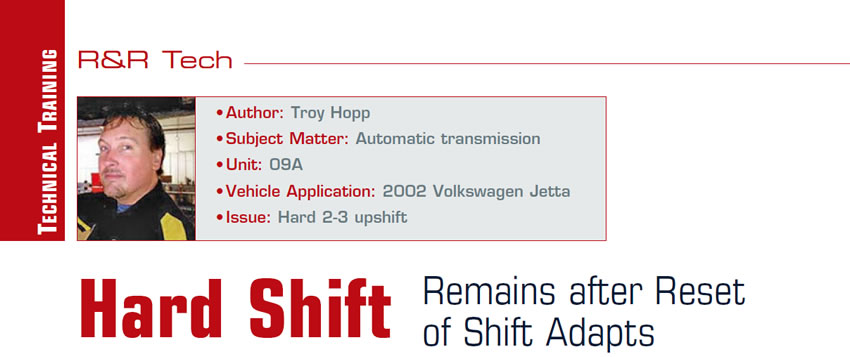
Looking ‘Outside the Box’
My first encounter with a Nissan CVT was an interesting experience. Our wholesale customer had diagnosed the transmission as being bad, so the transmission was then replaced. After replacement, the vehicle owner said the car would not accelerate beyond 40 mph. Since the installed transmission was purchased from us, it then became our responsibility to find the root cause of the problem and get the transmission working properly. We verified the customer’s complaint with the initial road test and then began diagnosing the cause.
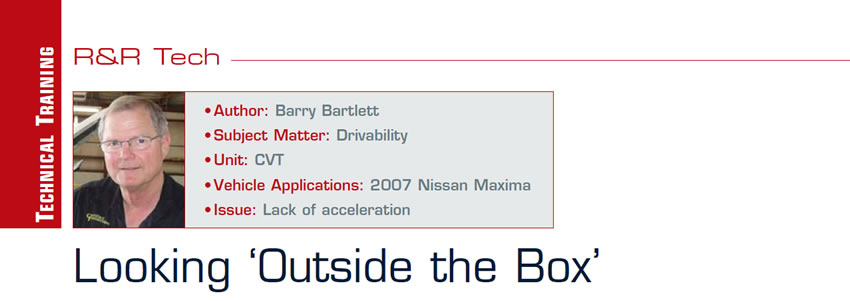
Information, Equipment & Experience
When a vehicle comes into your shop for repair you need to determine whether you have access to service information, the equipment needed to make the repair and the experience to repair it. As you read this article you will see just how challenging a transmission replacement sometimes can be. In this particular situation the service information was misleading and special equipment was needed to make the repair. This was one job that turned into yet another learning experience for me.

Magna Powertrain Transfer Case, RPO Code NQF
We finally had a big-enough snow this year to bring out the people with 4WD problems. This one was a 2008 Chevy Silverado 2500 HD.
It was from a tire distributor that has a number of these particular trucks. Their technicians had been trying to fix the issue of having no 4WD by putting various parts on it. They said that they had replaced the transfer-case motor and buttons.
I started out with the usual road test, scan and lift check to verify the problem. Sure enough, there was no 4WD and the transfer-case control module (TCCM) had every code possible stored. I thought I’d clear the codes and start out fresh.
